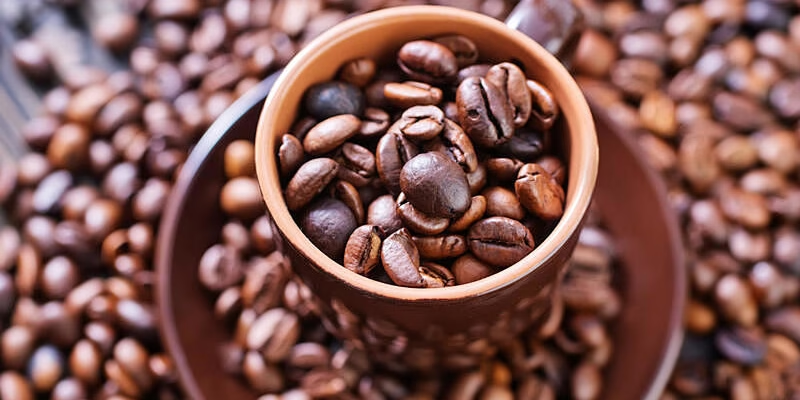As a coffee machine exporter who’s troubleshooting brew inconsistencies for 8+ years, I’ve heard it all: “My machine makes bitter shots with Ethiopian Yirgacheffe!” or “Brazilian Santos tastes flat—did I buy the wrong beans?” The truth? Blaming the beans misses the mark. The real issue? Mismatched bean characteristics and your fully automatic machine’s design. Let’s decode how coffee variety dictates machine choice—and how to avoid costly “trial and error.”

The Bean Factor: Why Variety Isn’t Just About Flavor
Coffee beans aren’t one-size-fits-all. Their origin, roast level, and physical traits directly impact how they interact with a machine’s mechanics (pressure, temperature, grind). Here’s a breakdown of key varieties and their “machine demands”:
1. Arabica: The Delicate Diva
- Traits: Higher acidity (bright, fruity notes), lower caffeine, denser beans (18–22% moisture), finer natural oils.
- Machine Needs:
- Higher brew temp (92–96°C) to extract sugars without under-extracting acidity.
- Finer grind (16–18 microns) to slow water flow and maximize flavor.
- Pre-infusion (8–12 seconds) to soften dense beans and prevent channeling.
- Common Pitfall: Using a machine with low-temperature boilers (<90°C) leads to sour, weak shots—common with budget models.
2. Robusta: The Bold Workhorse
- Traits: Lower acidity (earthy, nutty notes), higher caffeine, larger beans (14–18% moisture), more surface oils.
- Machine Needs:
- Lower brew temp (88–92°C) to avoid scorching oils and bitter tannins.
- Coarser grind (19–21 microns) to prevent clogging and reduce extraction time.
- Shorter pre-infusion (3–5 seconds) to avoid over-soaking and “muddy” flavors.
- Common Pitfall: Pairing Robusta with high-pressure pumps (>15bar) causes channeling—resulting in bitter, unbalanced shots.
3. Hybrid Blends: The Compromise King
Blends (e.g., 70% Arabica + 30% Robusta) balance acidity and body. They adapt better to mid-range machines but still need tweaks:
- Grind: Medium-fine (17–19 microns) to suit both bean types.
- Temp: 90–94°C—warm enough for Arabica, cool enough for Robusta.
Machine Design: Matching Specs to Bean Needs
Not all machines are created equal. Here’s what to look for based on your target bean variety:
1. Boiler Type: Single vs. Dual
- Single Boiler: Cheaper but limits temp control. Best for consistent blends (e.g., 60% Arabica). Avoid for single-origin Arabica or Robusta—temp fluctuations ruin extraction.
- Dual Boiler: Separate heating zones for brewing and steaming. Ideal for single-origin beans—you can set brew temp (94°C for Arabica) and steam temp (120°C) independently.
2. Pump Pressure: Adjustable vs. Fixed
- Fixed 9bar: Works for medium-roast blends but struggles with extremes (light Arabica or dark Robusta).
- Adjustable Pressure (8–15bar): A game-changer. Lower pressure (8–10bar) for Robusta prevents bitterness; higher (12–15bar) for light Arabica extracts brightness.
3. Grind Adjustment: Stepless vs. Click
- Stepless: Infinite grind settings. Critical for single-origin beans—you can dial in 16.5 microns for Ethiopian Yirgacheffe vs. 19 microns for Brazilian Santos.
- Click: Limited settings. Stick to blends—they tolerate minor grind variations.
Case Study: How a Client Fixed “Bad Coffee” with Bean-Machine Alignment
A Tokyo café struggled with inconsistent espresso: Arabica shots tasted sour; Robusta shots were bitter. We audited their setup:
- Issue 1: They used a single-boiler machine (temp fluctuated ±3°C).
- Issue 2: Fixed 9bar pressure—too high for Robusta, too low for light Arabica.
Solution:
- Upgraded to a dual-boiler machine with adjustable pressure (8–15bar).
- Set Arabica to 94°C/12bar/fine grind; Robusta to 90°C/9bar/coarse grind.
Result? Sales rose 25%—customers praised “balanced, vibrant” espresso.
FAQs: Your Bean & Machine Questions, Answered
Q: Can my fully automatic machine handle single-origin Arabica?
A: Only if it has adjustable temp/pressure. Budget models with fixed specs will under-extract—opt for dual-boiler machines with stepless grind.
Q: Do Robusta beans damage machines?
A: No—improper settings do. Robusta’s high oils clog group heads if grind is too fine or temp too high. Use coarser grinds and lower pressure.
Q: Are blends better for beginners?
A: Yes—blends adapt to mid-range machines. Start with 60/40 Arabica/Robusta before experimenting with single origins.
Wrapping Up: Beans and Machines Are Partners, Not Adversaries
Choosing the right coffee isn’t just about flavor—it’s about compatibility. By understanding how bean traits (acidity, density, oils) interact with machine specs (temp, pressure, grind), you’ll transform “bad brews” into barista-quality cups.
At Sheen, we’ve spent decades aligning beans and machines. Our latest guide, “Coffee Bean & Machine Compatibility Chart,” lists 10 popular varieties and their ideal machine settings.
Ready to stop guessing and start brewing? Explore our machine lineup, download our free compatibility guide, or reach out for a personalized consultation.
Stay curious. Stay precise. Stay Sheen.

